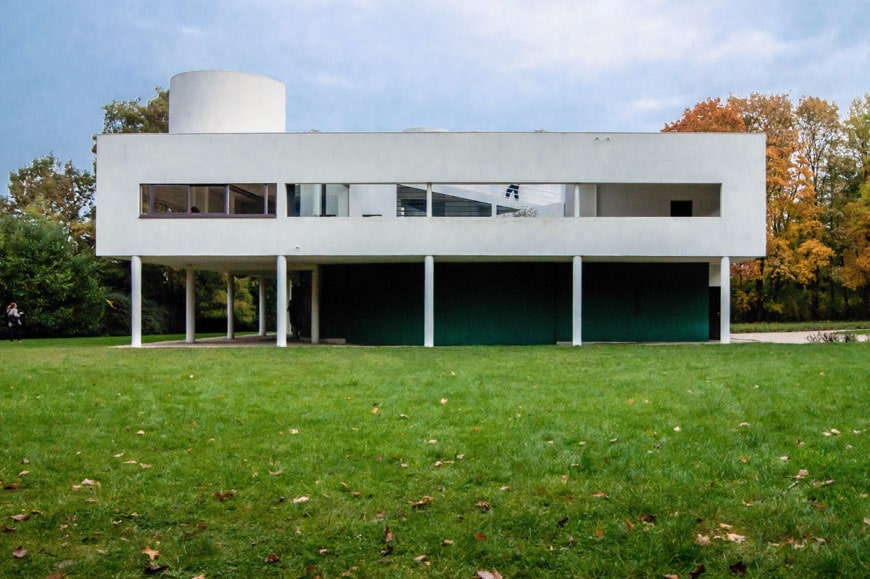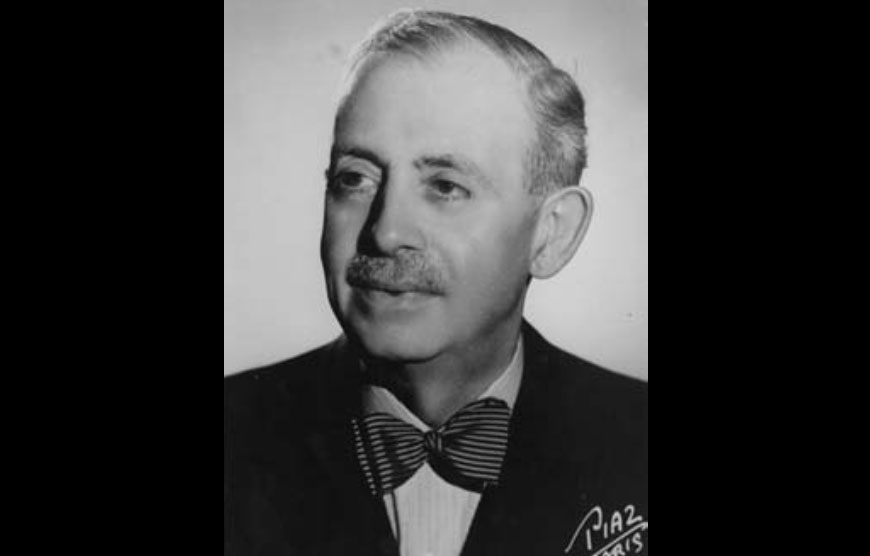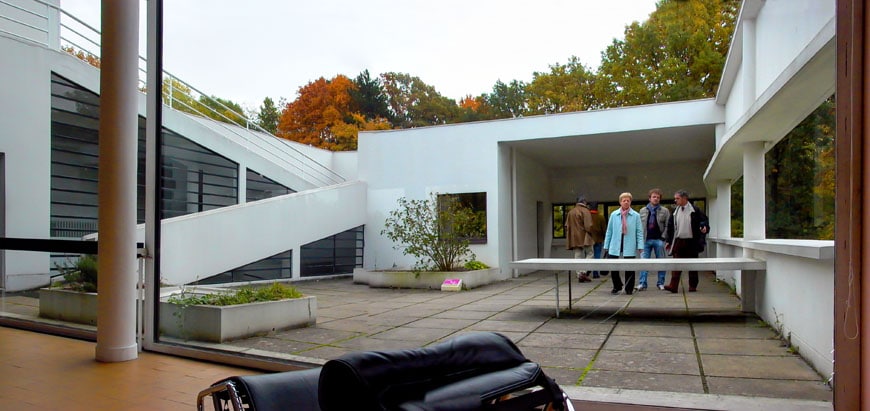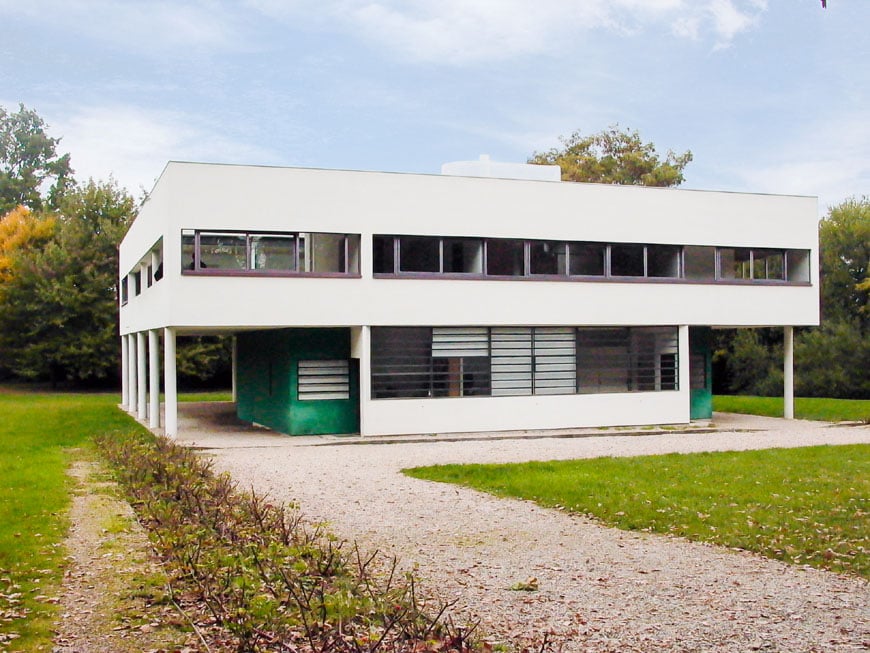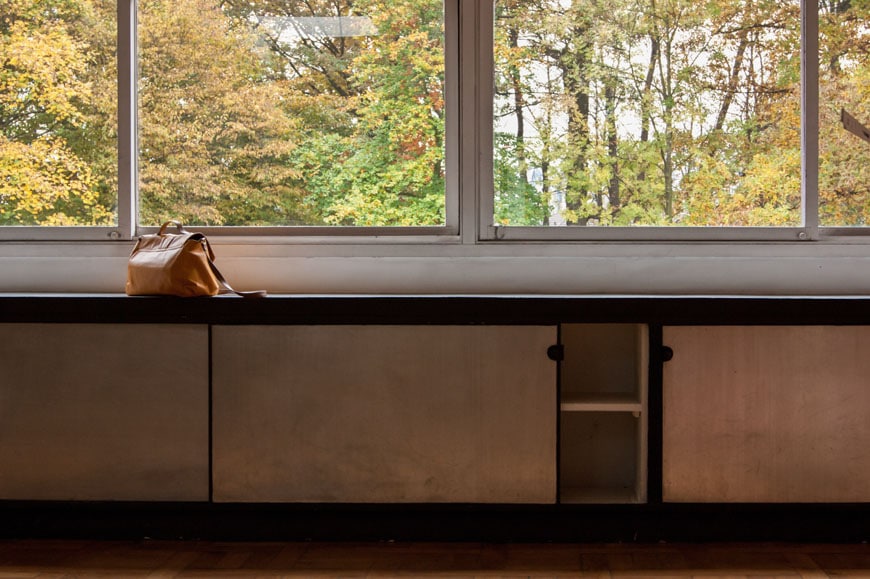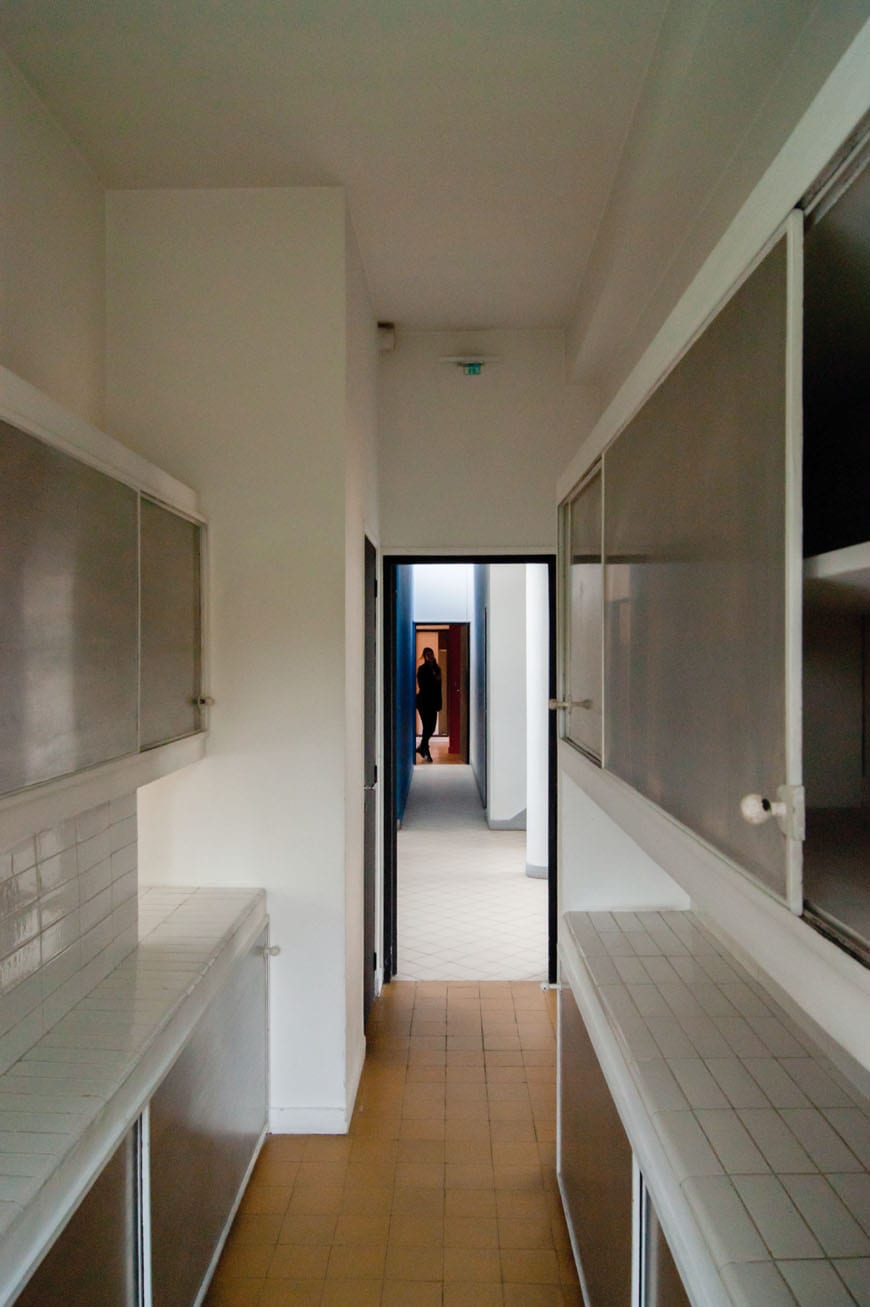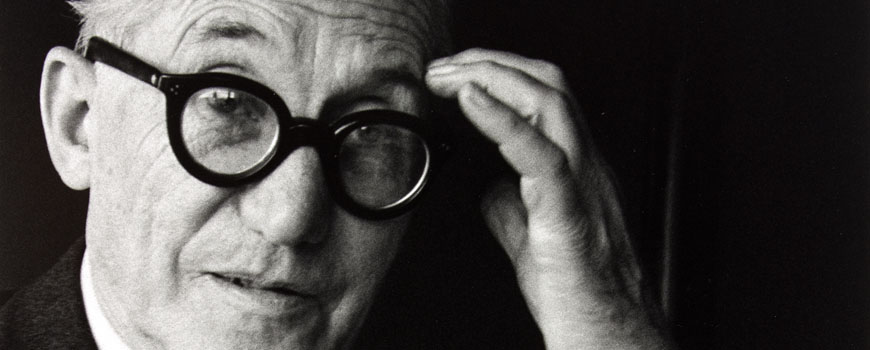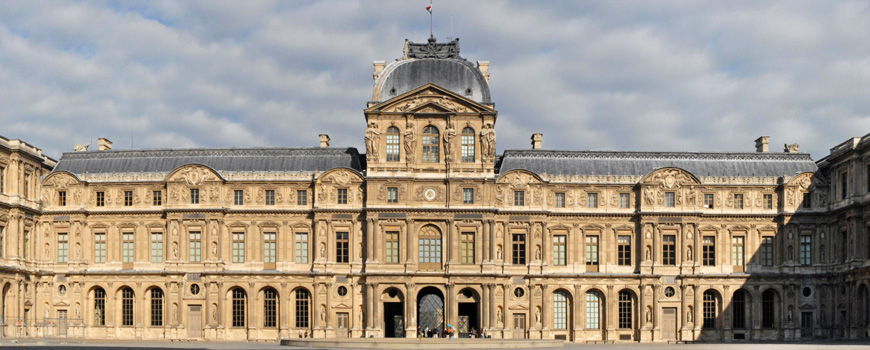Le Corbusier – Villa Savoye | part 1, history
Client: Pierre and Eugénie Savoye
Villa Savoye, southwest facade, Photo Inexhibit
LE CORBUSIER – VILLA SAVOYE | PART 1, HISTORY
For an architect, visiting Villa Savoye is a bit like a pilgrimage. Of course, you have read about it, seen it in photographs hundreds of times, drawn it at the University, and maybe you have even written something about it, but now you are watching it in person.
Villa Savoye is widely considered one of the greatest masterpieces of Le Corbusier, perhaps his greatest one. Even if I have personally found the experience of visiting Notre Dame du Haut or the tiny cabanon in Cap Martin possibly more emotional, I must agree that the Villa is extremely fascinating. Yet, the history of the building and its construction is rather troubled.
The commission
Le Corbusier (1) and his cousin Pierre Jeanneret were contacted in the spring of 1928 by Pierre Sayoye, a wealthy French insurer (2), and his wife Eugénie who wanted to commission them the design of a country house near Poissy, a small town on Paris’ outskirts.
Pierre Savoye, portrait courtesy of Gras-Savoye
Although the Swiss architect was 41 years old and famous as a theorist and for his speculative projects, he hadn’t built much until then. Therefore, the commission was a unique occasion for him to demonstrate, with a real building and without great economic constraints, the principles he had expressed in his seminal essay Toward an Architecture.
Clients like the Savoyes are probably what every architect dreamed of; they left Le Corbusier largely free to design the house he wanted, only requiring a precise program of spaces and, later on, some changes to reduce costs.
The plot of land chosen for the house was a beautiful wooded site about 30 kilometers / 18 miles northwest of central Paris.
It is still unclear if the Savoyes, who had a home in Rue de Courcelles in Paris, wanted only a country house or planned to relocate to the new villa permanently. Le Corbusier once wrote that “they wanted to live in the countryside; linked to Paris through 30 kilometers by car”; other documents, especially letters from Eugénie Savoye to the architect, suggest that the building was possibly intended as a rural retreat rather than a permanent abode.
The Savoye family was from Lille, in the Nord-Pas-de-Calais region, and it had no strong sentimental bonds with the French capital, it is then possible that, given the short distance between Poissy and Paris, where Pierre was working, they wanted to live in the new house full time or at least to do that when retired.
For sure, in a 1928 letter to Le Corbusier, Eugénie required the house to be easily expandable (I would like that the house could be expanded within some years, without that such expansion would damage it), thus somehow suggesting that it would become their main residence, sooner or later.
The architectural concept
Villa Savoye is broadly considered the best embodiment of Le Corbusier’s Five Points of a New Architecture (Les cinq points d’une nouvelle architecture), namely:
– the use of thin columns (called pilotis) to elevate the building from the ground and create a continuity of landscape at the ground level
– the free internal layout (Plan libre) that a column-based structure could provide if compared to load-bearing continuous walls made in masonry
– the beam-column structure made the facades non-structural, leaving the architect free to design them as pure functional/ aesthetical elements (Façade libre)
– the inclusion of a habitable flat roof (Toit terrasse) to be used as a garden, a solarium, and an “outdoor living room” in the Summer
– the adoption of horizontal ribbon windows (Fenêtre en longueur) to provide plenty of natural light in the rooms.
The terrace today, Photo Inexhibit
Nevertheless, limiting the innovations made with the Villa to only those elements is somehow reductive.
First of all, all five points rely, in one way or another, on the use of reinforced concrete as the preferred construction material, which may seem not that original today but it was so in the 1920s.
In the early 20th century, reinforced concrete was still considered more an engineering material than an architectural one; it was mainly adopted in infrastructures, industrial buildings, defensive constructions, and casemates during WW I, and used for civil buildings only by a few architects, including Auguste Perret, Le Corbusier’s mentor.
Yet, to achieve the functional flexibility, Le Corbusier needed for his new architecture, a framed system was necessary; the Swiss architects chose reinforced concrete as his electivestructural material, while others, such as Mies Van Der Rohe, preferred steel.
Strangely, almost none among the masters of the International Style considered timber as an alternative.
Another important point was the role of the automobile. Motorcars played a major part in influencing the functional layout of the building; a large part of the ground floor was indeed reserved for a garage for three cars and the house included a small apartment for the chauffeur. Le Corbusier wrote to Madame Savoye that “it’s the minimum turning radius of a car which defines the dimensions of the house”.
View from south, photo Inexhibit
More generally speaking, mechanics and technology were perceived as something extremely positive at the time, something capable of transforming a dwelling into a machine-à-habiter (Vers une architecture, 1923), which also explains the attention reserved by both the client and the architect for technical systems, which included state-of-the-art heating, water supply, and artificial lighting. “Here is the detailed list of the main elements I would like to be included in the country house. I want cold and hot water, gas, electricity (lighting and force), and central heating” (3); the “force” was intended to be used for an electric washing machine.
Villa Savoye, the kitchen with original equipment and furniture, photo Inexhibit
Another innovation is the strict relationship between architecture and landscape; something that doesn’t emerge much in the usual photos of the building but becomes evident when you visit it. I will cover this point later.
PART 2 – THE ARCHITECTURE OF VILLA SAVOYE
Notes
1) Le Corbusier’s real name was Charles-Édouard Jeanneret-Gris (b. 1887, La Chaux-de-Fonds, Switzerland); he adopted the nickname in the early ’20s as a nom de plume for his writings in the magazine L’Esprit Nouveau and maintained it also as an architect; his paintings were initially signed Jeanneret, then Le Corbusier, or L-C. The nickname and its shortened version Corbu originate from the French word corbeau (raven) as an allusion to the physical aspect of their owner
2) In 1907, Pierre Savoye founded, together with Gustave Gras, the insurance company Gras Savoye. The company still exists and is one of the largest insurance brokers in France, albeit no longer owned by the Savoye family
3) From a letter by Eugénie Savoye to Le Corbusier, June 8, 1928
copyright Inexhibit 2024 - ISSN: 2283-5474

